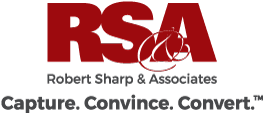How to know if you’ve fallen victim to Stock Footage Syndrome
– By #RSA

Have you ever watched a video advertising a resort or hotel that looks peaceful and luxurious? Only to arrive and find that your dream getaway is not even close to five stars? Or maybe you watched a video for a company you considered joining full of happy faces laughing in a bright, cheery office. Then you go in for your interview and the office is full of tired-looking faces in a sea of beige? You, my friend, have fallen victim to Stock Footage Syndrome
Stock Footage Syndrome is what happens when companies use stock footage that is not realistic or accurate of their brand. This leads to customers and clients having unrealistic expectations only to be disappointed when they see the truth.
Stock Footage Syndrome can affect businesses of all sectors and across all industries. From retail, hospitality, restaurants, and more, stock footage used incorrectly can paint an unrealistic view of who you are and what you do.
So how can you use stock footage appropriately to ensure your viewers aren’t experiencing Stock Footage Syndrome?
When used in moderation stock footage has the potential to really elevate a video project. One thing stock footage excels at is adding a human element to your videos. Often times you may have people who don’t want to be on camera and hiring talent can be an expensive endeavor. Choosing appropriate stock footage can help you showcase a human element and elicit emotions with your viewers.
Stock footage can also be helpful when you are trying to put together a video project on a budget. If you forget to film a shot you need it can be a time-consuming, expensive task trying to coordinate a new shoot, get your equipment, and find talent and everything else that goes into filming. Stock footage can be used to help fill in some of the gaps in your own footage.
Stock footage is also great to help establish the story or provide visual elements, especially if you are looking for close-up shots. For example, if you are shooting a video for a new grocery store, using stock footage of the produce section would be okay because most produce sections are similar. On the contrary, you wouldn’t want to use an exterior shot of another grocery store from a stock footage website, because it would be fairly obvious that is not your actual store.

The problem with stock footage is when you rely on it too much you aren’t painting an accurate depiction of your company. This makes it difficult for your audience to connect with you. Consumers like to know the who, what, and why behind the businesses they purchase from or work with. By showcasing the real people, products, and services behind your business, people feel like they can trust you. And trust is one of the most important aspects of healthy customer relations and superior reputation management. While you can utilize stock footage to help complement your video project, most of your video should be comprised of branded b-roll.
Not sure what branded b-roll is or how to capture it? Don’t miss our blog next week where we will dive into the best ways to capture branded b-roll for your business.
If you feel like your utilizing too much stock footage in your videos and don’t have the time or resources to capture b-roll, give Robert Sharp & Associates a call at 605.341.5226. Our video production team can help you generate a shot list and provide professional quality video to be used in a variety of different formats.
Last Modified:


